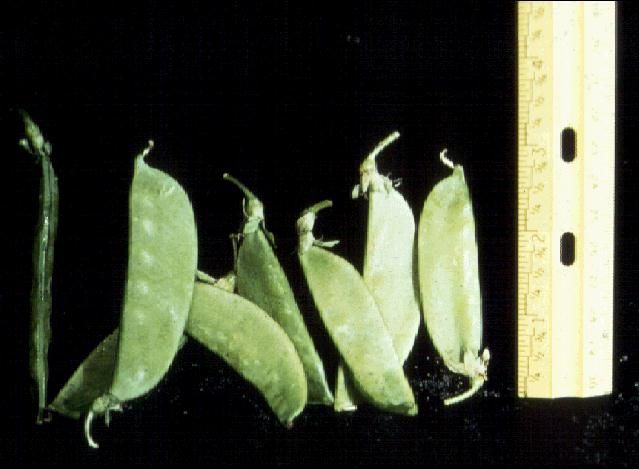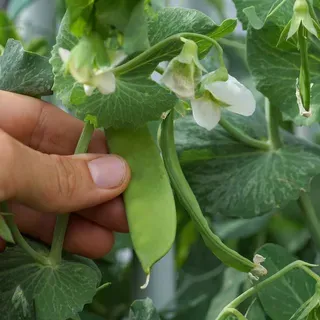Pea, Snow—Pisum sativum L. (Macrocarpon group)1
Snow pea is also called edible-podded pea, sugar pea (United States), shih chia wan tou, ta li wan tou (Mandarin), sic kap woon dou (Cantonese), no laan tau (Hong Kong), and saya-endo (Japanese). Varieties of edible-podded peas closely resemble the English pea in plant and growth characteristics except that the pods are flatter, broader, more tender, more fleshy, and less fibrous. Entire pods, including the immature seeds, are eaten whole. They are harvested before the seeds start to accumulate starch and are cooked like snap beans.

Credit: James M. Stephens, UF/IFAS
Culture
Its culture is similar to that for English peas. For best results, sow seeds in the cool season of the year in Florida. However, the snow pea has wider adaptation and does better under higher temperatures than the garden pea. For example, it is commonly grown in the lowlands of the Philippines. Some are grown in Mexico and the Caribbean Islands during the winter for export to the United States. In the United States, the major states in which it is grown are California, New Jersey, and Hawaii. In Florida it is grown by a few producers of oriental vegetables and a lot of home gardeners.
There are several varieties of snow pea that probably will give good results throughout the state. 'Oregon Sugar Pod' has been suggested for best commercial potential. It and the early maturing 'Dwarf Sugar' are good choices for the garden. 'Sugar Snap' has round, plump pods, and is a member of a group of other similar varieties generally referred to as "snap peas."
Use
Not only are snow peas cooked, stir-fried, and otherwise used in oriental cookery, they are delicious as a raw vegetable at parties, along with carrot sticks and zucchini slices.



